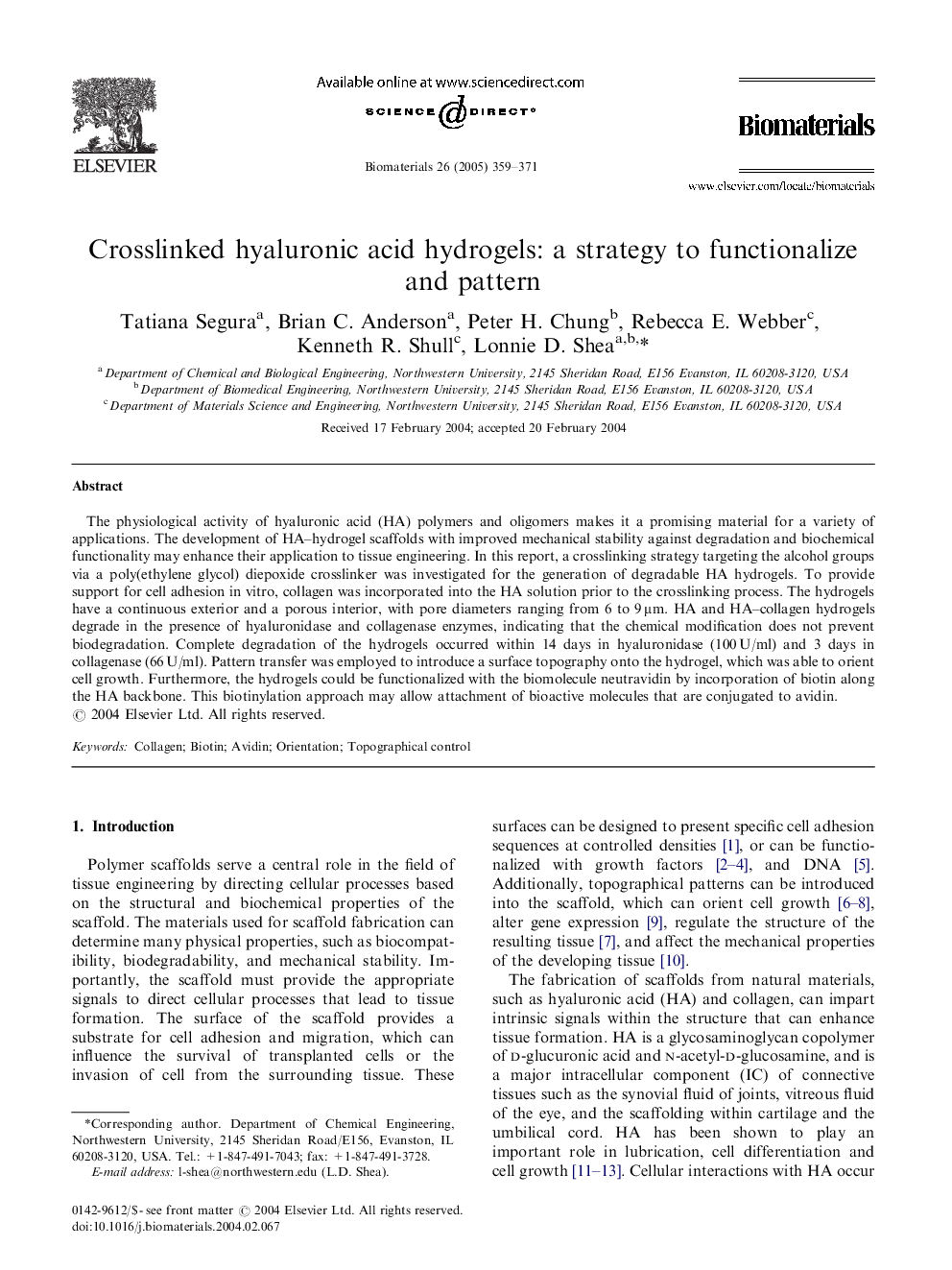| Article ID | Journal | Published Year | Pages | File Type |
|---|---|---|---|---|
| 10230124 | Biomaterials | 2005 | 13 Pages |
Abstract
The physiological activity of hyaluronic acid (HA) polymers and oligomers makes it a promising material for a variety of applications. The development of HA-hydrogel scaffolds with improved mechanical stability against degradation and biochemical functionality may enhance their application to tissue engineering. In this report, a crosslinking strategy targeting the alcohol groups via a poly(ethylene glycol) diepoxide crosslinker was investigated for the generation of degradable HA hydrogels. To provide support for cell adhesion in vitro, collagen was incorporated into the HA solution prior to the crosslinking process. The hydrogels have a continuous exterior and a porous interior, with pore diameters ranging from 6 to 9 μm. HA and HA-collagen hydrogels degrade in the presence of hyaluronidase and collagenase enzymes, indicating that the chemical modification does not prevent biodegradation. Complete degradation of the hydrogels occurred within 14 days in hyaluronidase (100 U/ml) and 3 days in collagenase (66 U/ml). Pattern transfer was employed to introduce a surface topography onto the hydrogel, which was able to orient cell growth. Furthermore, the hydrogels could be functionalized with the biomolecule neutravidin by incorporation of biotin along the HA backbone. This biotinylation approach may allow attachment of bioactive molecules that are conjugated to avidin.
Keywords
Related Topics
Physical Sciences and Engineering
Chemical Engineering
Bioengineering
Authors
Tatiana Segura, Brian C Anderson, Peter H Chung, Rebecca E Webber, Kenneth R Shull, Lonnie D Shea,
